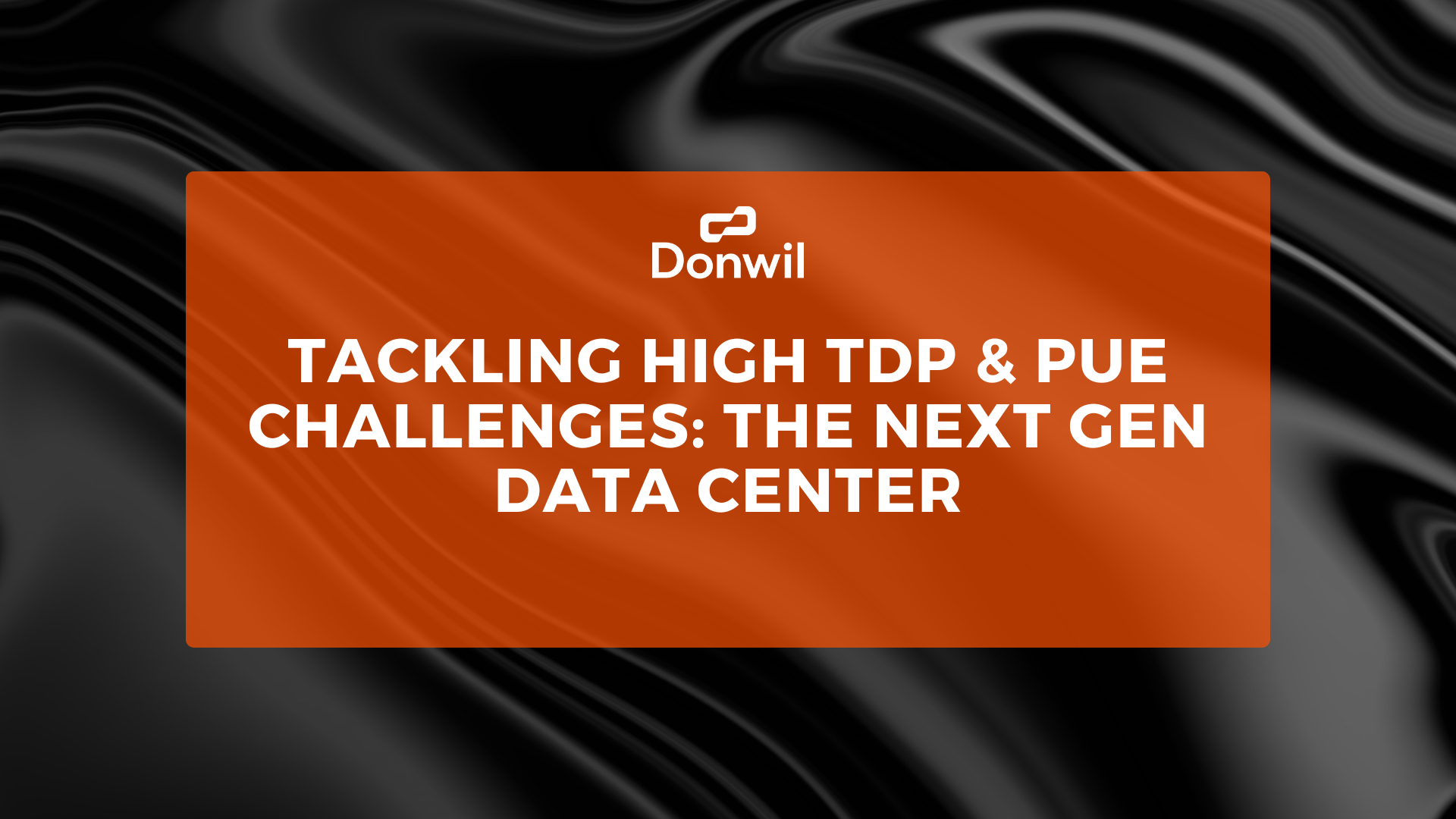Now more than ever, there are two key challenges that data center professionals are continuously trying to tackle – managing high Thermal Design Power (TDP) and improving Power Usage Effectiveness (PUE).
Amidst scaling complexities, these issues are no simpler to tackle.
Industries, from healthcare to manufacturing, have embraced AI, big data, and IoT, leading to unprecedented advancements but also to significant strains on data center operations. The compelling question arises – how do we sustainably manage this burgeoning load?
The answer lies in the promising horizon of next-gen data centers, which are rising to the challenge with innovative strategies like liquid cooling to not only enhance sustainability but also adeptly manage high TDP while improving PUE.
The Delicate Balance of TDP and PUE
Before we tackle the liquid cooling, it’s essential to understand the challenge at hand.
The relationship between TDP and PUE is not straightforward or linear, but this doesn’t make them any less challenging to manage. They are, however, crucial metrics in understanding data center efficiency and its ability to meet high-computing performance demands.
TDP directly impacts the cooling requirements of data centers. Components with higher TDP values generate more heat, requiring more robust cooling solutions to prevent overheating and maintain optimal performance. Higher TDP values often lead to higher energy consumption for cooling, impacting overall PUE. Managing TDP effectively is essential for maintaining efficiency and performance while minimizing energy waste.
PUE, on the other hand, measures the efficiency of a data center’s energy use. A lower PUE indicates higher efficiency, meaning more of the energy consumed is used for computing rather than auxiliary functions like cooling. Managing PUE involves optimizing cooling systems, power distribution, and IT equipment to minimize energy waste and improve overall efficiency.
There’s More to the Equation than Just TDP & PUE
While TDP and PUE are critical metrics, they’re not the only ones you should care about. Here are a few that need to be at the forefront of your optimization strategy:
- Data Center Infrastructure Efficiency (DCiE): DCiE is another metric used to evaluate the energy efficiency of a data center. It is calculated as the ratio of IT equipment power to total facility power. A higher DCiE indicates higher efficiency, as more of the total power is being used to power IT equipment rather than support systems.
- Carbon Usage Effectiveness (CUE): CUE is a metric that evaluates the carbon footprint of a data center. It is calculated as the total carbon emissions of the data center divided by the total IT equipment energy consumption. Lower CUE values indicate a more environmentally friendly data center.
- Water Usage Effectiveness (WUE): WUE is a metric that measures the water efficiency of a data center. It is calculated as the total annual water usage of the data center divided by the IT equipment energy consumption. Lower WUE values indicate more efficient water usage.
- Energy Reuse Effectiveness (ERE): ERE is a metric that measures the efficiency of using waste energy from the data center. It is calculated as the total energy reused divided by the total energy consumed by the data center. Higher ERE values indicate more efficient use of waste energy.
- Server Utilization: Server utilization is a metric that measures the percentage of time that servers are actively processing data. Higher server utilization rates indicate more efficient use of server resources and can lead to energy savings and improved performance.
- Cooling System Efficiency: Data centers should also consider the efficiency of their cooling systems. Metrics such as Cooling Capacity Factor (CCF) and Cooling System Efficiency (CSE) can help evaluate the effectiveness of cooling systems in removing heat from the data center.
Say Hello to Liquid Cooling
Traditional air cooling systems structured around hot and cold aisles have served us well, but they are steadily falling behind as newer, hotter chips come into play.
The new generation of data centers is all about embracing the power of liquid cooling.
Liquid cooling is a method of cooling, typically water or a specialized fluid, to absorb and dissipate heat. This coolant circulates through a system of pipes or channels that are in direct contact with the components, absorbing heat and carrying it away from the hardware.
By using conductive liquids to absorb and transfer heat, liquid cooling can outperform air cooling significantly. But the benefits don’t stop there. Here’s how liquid cooling addresses some of the primary obstacles in data center thermal management:
- Energy Efficiency: Liquid is a better conductor of heat compared to air, enabling more efficient heat transfer, which can lead to reduced CO2 emissions and lower energy usage.
- Density and Space Saving: Liquid cooling systems allow for a greater density of servers, as they require less physical space for the cooling apparatus compared to traditional methods.
- Extended Hardware Lifespan: Stable temperatures ensure that components are not exposed to thermal fluctuations, thus extending their lifespan.
- Acoustic Reduction: Liquid cooling is quieter than air cooling, which often relies on loud, high-speed fans.
While liquid cooling presents an attractive alternative, transitioning isn’t as simple as swapping out hardware; it needs a strategic blueprint with all stakeholders involved.
Transitioning to Liquid Cooling
Existing infrastructure is primarily designed for air cooling, with hot aisle and cold aisle setups widely in place. Retrofitting or overhauling this architecture to accommodate liquid cooling systems doesn’t necessarily have to be a significant operational undertaking.
To surmount these barriers, a phased approach can be adopted to ensure minimal disruption. This might involve:
- Modular Deployment: Implementing liquid cooling systems in stages, focusing first on the highest heat-generating equipment.
- Hybrid Environments: Using a combination of air and liquid cooling to maintain legacy systems while new equipment is designed for liquid cooling from the outset.
- Partnering with Experts: Collaborating with critical infrastructure partners like Donwil, who specializes in IT, Power, and Cooling solutions can help you explore possibilities that can fit into your existing data center layouts while minimizing disruptions and downtime.
The Road Ahead
Ultimately, liquid cooling has the potential to greatly improve the efficiency and sustainability of data centers, making it a key solution for the ever-evolving world of technology.
As the demand for more powerful and energy-efficient computing systems continues to rise, we can expect to see an increase in the adoption of liquid cooling technology in data centers. With ongoing advancements and improvements being made, liquid cooling will likely become a standard method for cooling high-density computing environments in the future.
Interested in learning more about liquid cooling and how to implement it in your data center? Donwil is here to help, Contact us today to see how we can assist you in finding the best cooling solution for your specific needs.

